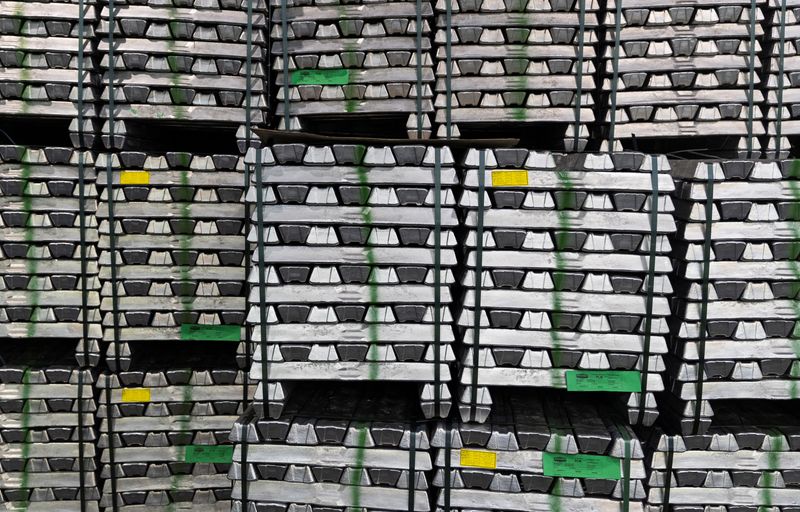Car bumpers made of green aluminum
2022.12.17 11:27
[ad_1]

Car bumpers made of green aluminum
Budrigannews.com – The production of low-carbon metals by aluminum producers is expected to rise by 10% in 2023 and even more in the years to come. This will lower the cost for automakers looking for environmentally friendly materials and reduce the industry’s significant carbon footprint.
Aluminum production requires the most energy, contributing approximately 1.1 billion tonnes of annual global CO2 emissions. The anticipated rise in “green aluminum” production for the coming year would result in a decrease of 13 million tonnes, or roughly 1.2 percent.
Strain by state run administrations to cut ozone harming substance discharges has given aluminum makers a motivation to increase result of the low-carbon material, which produces under 4 tons of CO2 for every significant amount of metal contrasted with the worldwide normal of 16.6 tons.
This indicates that the premium that automakers, beverage can manufacturers, and construction suppliers can charge buyers already suffers from global surpluses of green aluminum, which are primarily produced using hydropower or recycled materials.
Ivan Vella, Rio Tinto’s CEO, stated, “It’s (the premium) been very modest now for the last couple of years.” Aluminum, as stated at a conference for investors last month.
Vella went on to say that the business had experienced some recent premium increases without providing any specifics.
Low-carbon aluminum supplies worldwide have been strong for a number of years, but they fell in 2022 primarily as a result of restrictions in hydropower-dependent southern provinces in China’s top producer.
According to analyst Simon Large of consultancy CRU, output is anticipated to rebound globally next year, rising by 10% to 18.56 million tonnes, or 26% of total aluminum production.
Due to the large Scandinavian producers’ use of hydropower, the proportion of low-carbon products in Europe’s overall supply is significantly higher than in the rest of the world and should reach 83% next year, he added.
The expansion in additional feasible supplies has concurred with developing endeavors by organizations to show their green accreditations to buyers, drove by the European vehicle area.
Last year, BMW of Germany agreed to purchase solar-powered aluminum from Emirates Global Aluminium, while Volkswagen (ETR:) Alcoa’s new ELYSIS technology is being used by Audi, the premium brand (NYSE:). and Rio Tinto, which uses oxygen to take the place of all CO2 emissions.
For competitive reasons, most businesses are reluctant to disclose how much low-carbon material they purchase and any premiums paid.
More Toshiba can sell for 2 trillion yen
Polestar, a manufacturer of electric vehicles (EVs), and Norsk Hydro, a company based in Norway, have begun using environmentally friendly aluminum as part of a project to produce a vehicle that emits no emissions at any stage of production. which produces much of its metal with hydropower.
Polestar stated that it pays slightly more for green aluminum because switching suppliers incurs administrative costs, but it did not specify how much more.
According to a company spokesperson, “the cost per reduced kg of CO2 emissions when shifting to green aluminum is still significantly lower than many other ways to reduce raw material emissions.”
Additionally, Norsk Hydro agreed to provide Mercedes-Benz with aluminum that emits less than 3 tonnes of CO2 per tonne.
Low-carbon technologies have received significant investment from aluminum companies. While Rio Tinto, Alcoa, and the government of Canada invested $228 million in their new ELYSIS process, Norsk Hydro claimed this year that it had spent billions of dollars making its aluminum more environmentally friendly.
However, analysts claim that such investments to increase output are lowering the prices that producers are able to charge for their low-carbon products, particularly this year, when overall demand has been impacted by fears of a recession.
Jorge Vazquez, a consultant with Harbor Aluminum, stated, “Low carbon premiums on the spot side have basically disappeared.”
He stated that the spot premium for low-carbon billet, a manufactured product that is frequently utilized in construction, has decreased to zero from $30 per tonne in January.
Under quarterly and annual contracts, producers are still able to sell some of their low-carbon output at higher prices.
He added that the use of wire rod in power wiring connected to the worldwide transition to green energy commands the highest premiums.
However, even the bumper premium of $45 per tonne for wire rod is less than 2% of the benchmark aluminum price.
Additionally, there are regional variations.
More FTX customer names will be published
“Where we’ve seen the most willingness to entertain green premiums is Europe, where it is quite accelerated,” an industry source who requested anonymity stated. “We’re starting to see the early elements in North America, but Asia is behind.”
Another analyst stated that the European Union’s plans to impose tariffs on imports of high-carbon goods by 2026 may boost premiums in Europe.
Both recycled materials, which require approximately 95% less energy to produce, and low-carbon primary aluminum are abundantly available to consumers.
According to Marcelo Azevedo of the McKinsey consultancy, rising output of both will maintain relatively low green premiums in the upcoming years.
However, he added, shortages in high-demand regions like Europe could result from restricted supply movement.
According to Azevedo, “ultra-low” carbon aluminum, or metal produced with less than 2 tonnes of carbon emissions per tonne of metals, is one sector that is defying the weak trend. There are strong premiums in this category due to a lack of material.








